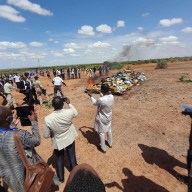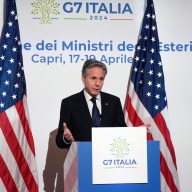A democratic colony far above Earth that looks like a giant cylinder, has no violence and whose residents eat meat grown in a lab. This is Asten, a utopia designed by Toronto student Eric Yam, and it has won a NASA grand prize.
Everybody at the orbiting space colony would speak fluent English, Hindi and Mandarin.
Education would include courses on good citizenship, settlers would be pre-screened for a propensity for violence and everybody would have access to free, efficient health care.
“I designed it to be close to the Canadian society that I live in,” says Eric Yam, a Grade 12 student at Northern Secondary School who won the grand prize in a NASA contest for conceiving a space city like an idealized Toronto.
For the superstructure, Yam even designed a series of stacked rings, like a hollow cylinder, reminiscent of the curved towers of Toronto City Hall.
“I never noticed that before,” he said yesterday when the prize was announced.
The annual contest, judged by engineers and scientists at the National Aeronautics and Space Administration, calls for students in Grades 6 to 12 to design a space colony that would orbit the Earth 50 years from now.
Yam beat out more than 300 entries from nearly 900 students around the world to become the first Canadian to win the contest in its 16 years. He tied with a team from Orissa, India.
He called his space station Asten, another name for the Egyptian god Thoth, master of divine and physical law.
“He basically built a utopia from scratch,” said math and physics teacher Gillian Evans, staff adviser on the project.
“He had to design something that would orbit the Earth successfully,” she said in admiration of Yam, whom she described as a well-rounded student.
“He had to explain how to build it cheaply, finance it, keep it running, how to feed people, keep their air clean, how it would govern and police itself, and what’s the social structure.”
Designed as a self-sustaining colony for 10,000 residents, Asten would be open to as many as 300 visitors at a time, including revenue-producing tourists.
Four main characteristics of the Asten project perhaps caught the judges’ eyes, the 17-year-old said.
Modularity: Yam designed modular components, such as apartment units and distinct common corridors, that could be updated or replaced by other types of units altogether.
Mass production: “If you can mass-produce certain sections, you can save money, time and you can cut down on errors,” he said.
Use of existing technology: “He didn’t go too far in making up stuff,” Evans said. “He didn’t say, ‘Maybe this will be feasible in 50 years so we’ll pretend it will be.”
Social systems: After designing the technology, Yam proceeded to lay out a social structure that calls for a democratically elected president and a council of 20 experts in five fields, including environmental sustainability.













